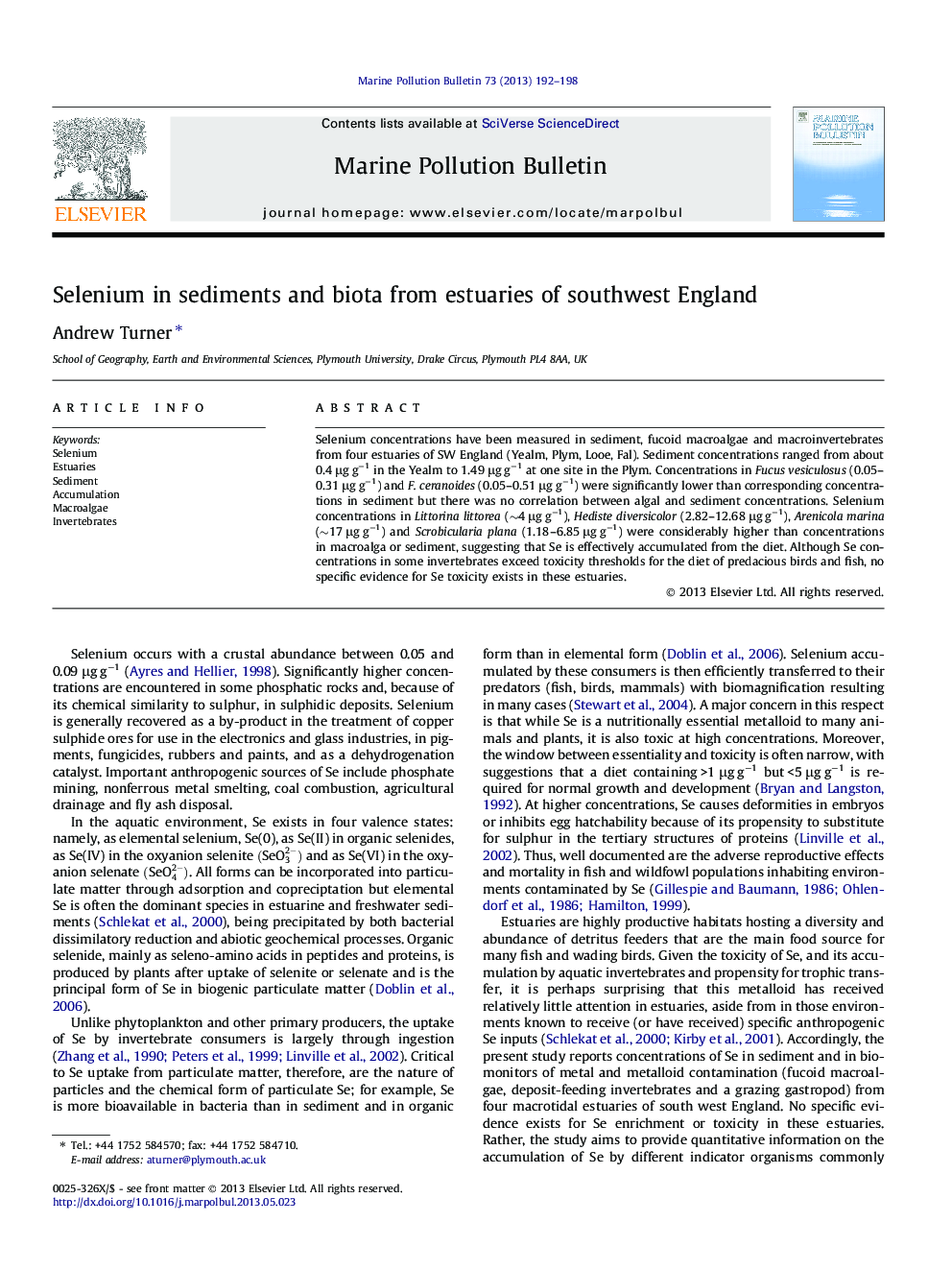| Article ID | Journal | Published Year | Pages | File Type |
|---|---|---|---|---|
| 6359434 | Marine Pollution Bulletin | 2013 | 7 Pages |
â¢Selenium has been measured in sediments and biota from four UK estuaries.â¢Concentrations were higher in all invertebrates than in sediment and macroalgae.â¢Results suggest that Se in invertebrates is effectively accumulated from the diet.â¢Concentrations in some invertebrates are sufficiently high to be of concern.
Selenium concentrations have been measured in sediment, fucoid macroalgae and macroinvertebrates from four estuaries of SW England (Yealm, Plym, Looe, Fal). Sediment concentrations ranged from about 0.4 μg gâ1 in the Yealm to 1.49 μg gâ1 at one site in the Plym. Concentrations in Fucus vesiculosus (0.05-0.31 μg gâ1) and F. ceranoides (0.05-0.51 μg gâ1) were significantly lower than corresponding concentrations in sediment but there was no correlation between algal and sediment concentrations. Selenium concentrations in Littorina littorea (â¼4 μg gâ1), Hediste diversicolor (2.82-12.68 μg gâ1), Arenicola marina (â¼17 μg gâ1) and Scrobicularia plana (1.18-6.85 μg gâ1) were considerably higher than concentrations in macroalga or sediment, suggesting that Se is effectively accumulated from the diet. Although Se concentrations in some invertebrates exceed toxicity thresholds for the diet of predacious birds and fish, no specific evidence for Se toxicity exists in these estuaries.
